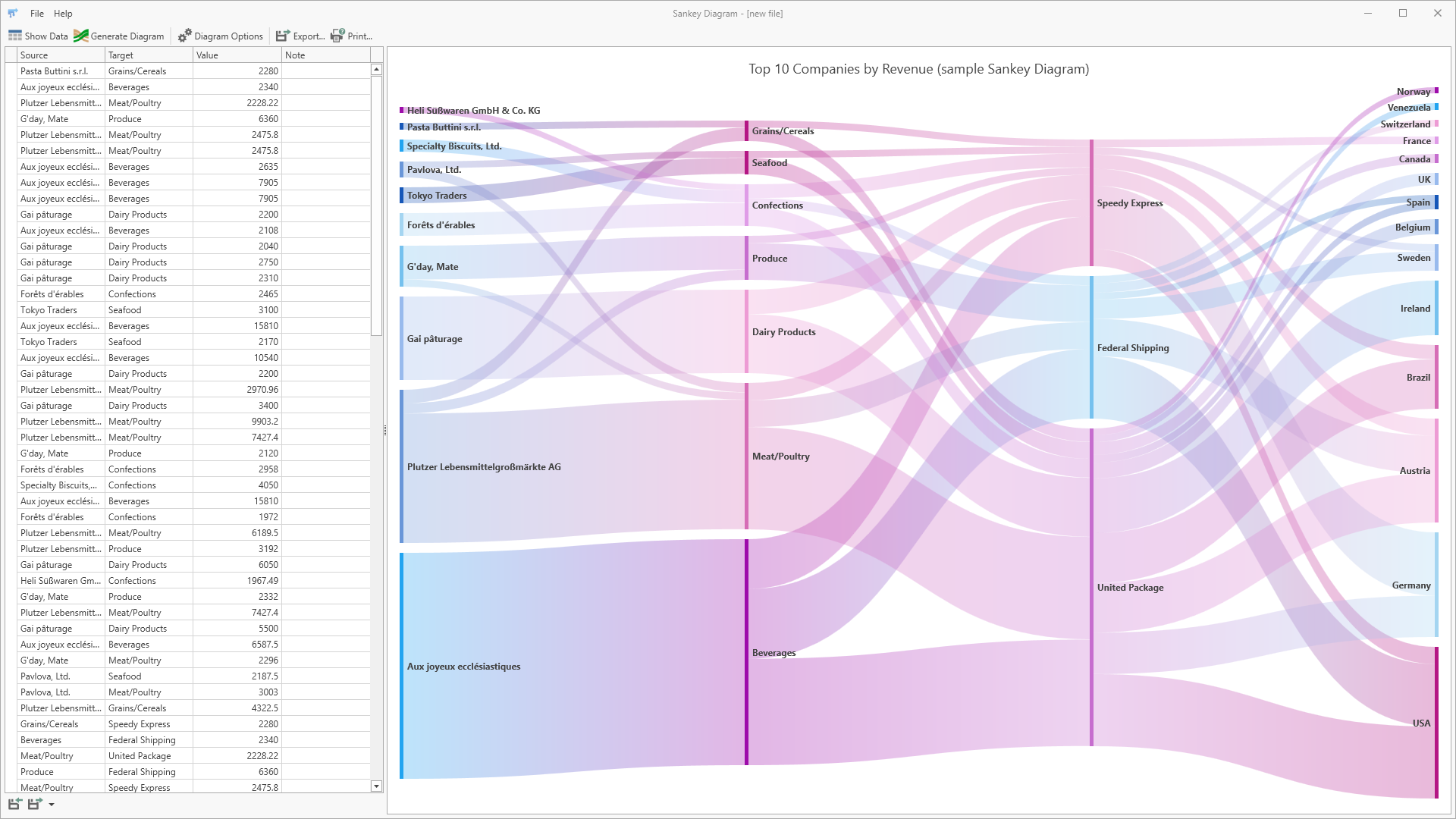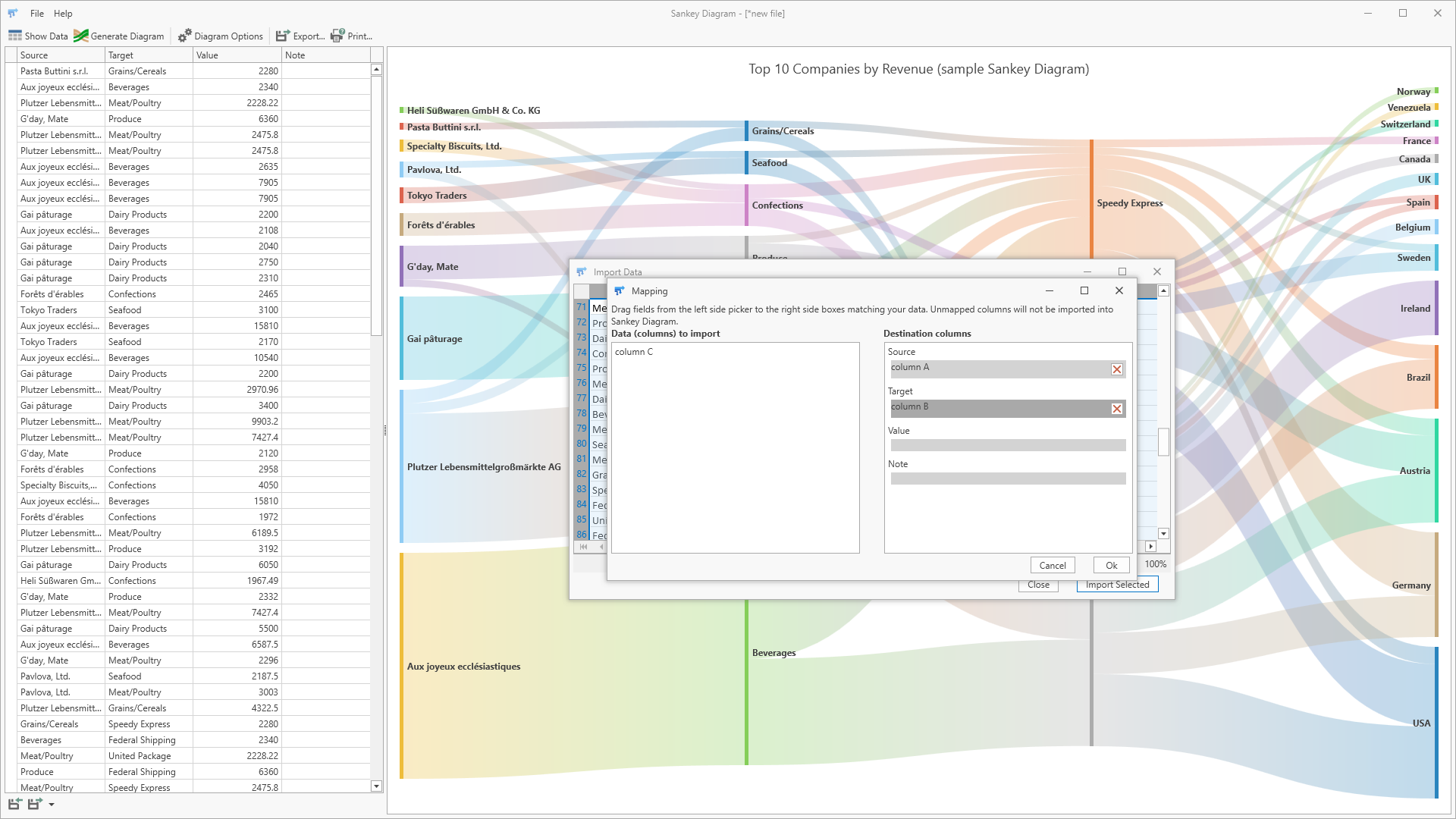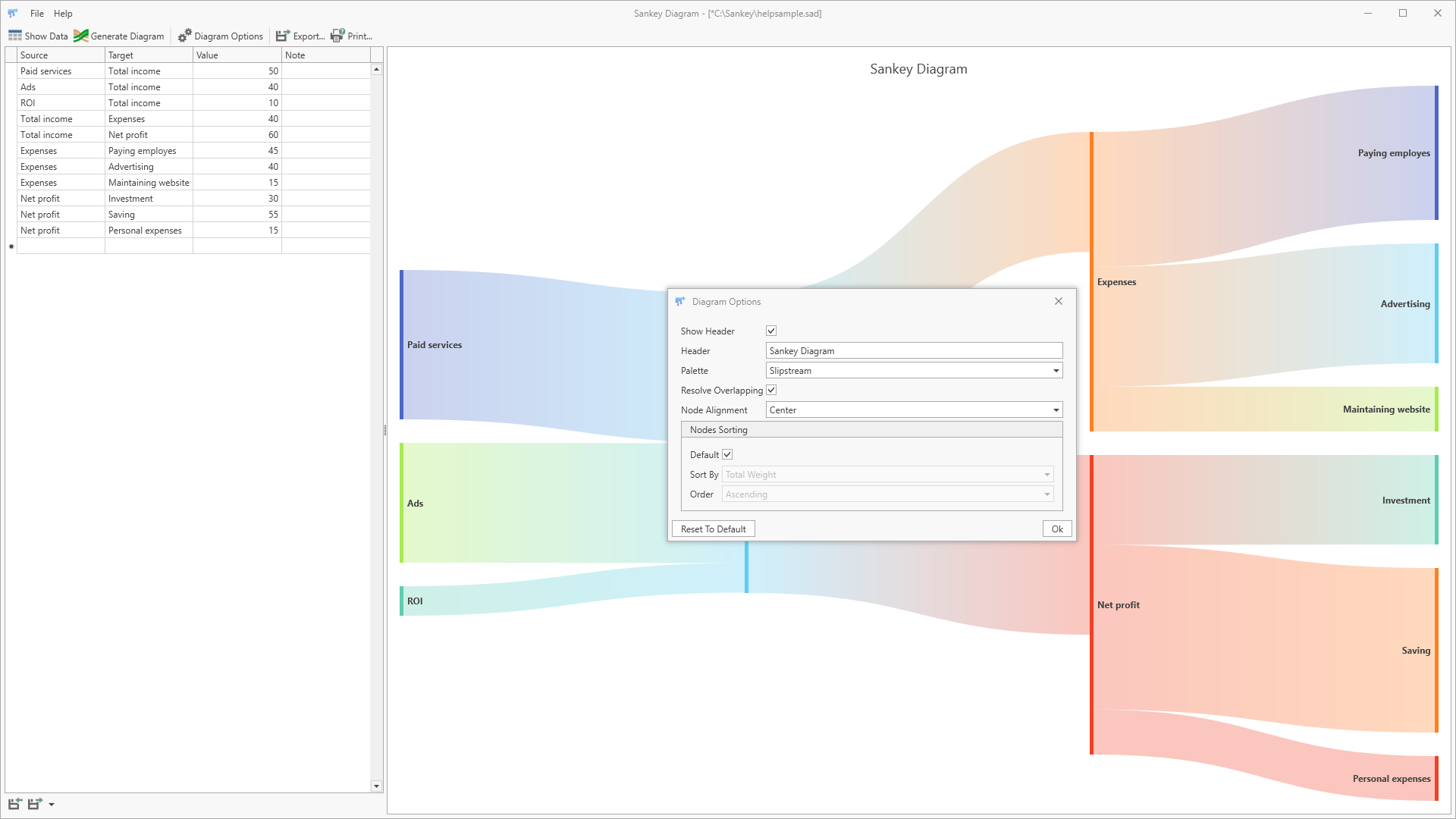SANKEY DIAGRAM
Transform the way you visualize and analyze complex flow data with ease and precision. Empower your decision-making process by efficiently entering or importing data, and bring your diagrams to life with over 20 vibrant color palettes. Take control of your visualizations with custom node ordering, and effortlessly highlight crucial nodes and links for enhanced clarity. Don’t let complexity hold you back – try the Sankey Diagram App today!
ABOUT SANKEY DIAGRAMS
Sankey diagrams are a type of flow diagram that visually represent the flow of materials, energy, or money through a system. They are named after the Irish engineer and economist Matthew Sankey, who first introduced the concept in the late 19th century. Sankey diagrams are commonly used in engineering, environmental science, and economics to visualize complex systems and make them more understandable.
The basic structure of a Sankey diagram consists of nodes (or boxes) representing different stages or components of the system, and flows (or arrows) representing the movement or transfer of the material, energy, or money between them. The width of the flows is proportional to the quantity being transferred, so larger flows are represented by wider arrows. In addition, the flows are usually color-coded to indicate different types of materials or energy, or to highlight certain aspects of the system.
One of the strengths of Sankey diagrams is their ability to show the relative proportions of different inputs and outputs of a system. For example, a Sankey diagram of a power plant might show how much of the energy from burning coal is lost as waste heat, and how much is converted to electricity. By using the diagram, engineers can identify areas where improvements can be made to increase efficiency and reduce waste.
Another strength of Sankey diagrams is their ability to show the connections between different stages of a system. For example, a Sankey diagram of a water treatment plant might show how water from various sources is treated and distributed to homes and businesses. By using the diagram, environmental scientists can identify areas where contamination might occur and take steps to prevent it.
Sankey diagrams are also useful for communicating complex data to a non-technical audience. By presenting the data in a clear and visually appealing format, viewers can quickly grasp the main points and understand the relationships between different components of the system.




